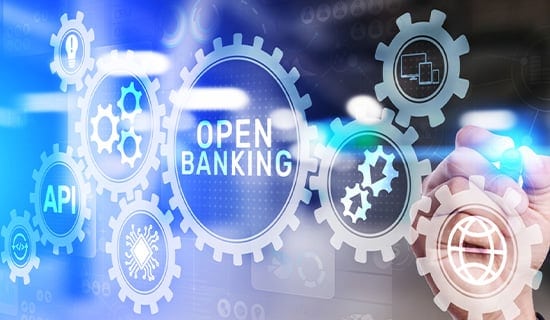Center for Automated Integration
The goal of automated integration is to enable applications and systems that were built separately to easily share data and work together, resulting in new capabilities and efficiencies that cut costs, uncover insights, and much more.
A Look at Enterprise Messaging
Two relatively recent trends have changed the requirements for enterprise messaging. And that has narrowed the choice of technologies that can help businesses today.
APIs, Unlike Diamonds, Sometimes Are Not Forever
Companies will be hard-pressed to deal with APIs that change or are discontinued over time. All the more need for API lifecycle management.
Backend Data Integration Challenges in the Age of Cloud
Cloud is increasingly supporting faster and more comprehensive methods of data integration, including automated data pipelines, real-time data streaming, and data lakehouses that integrate cloud data warehouses and data lakes.
What Does a Hybrid Environment Mean in a Modern World
Organizations need an easy, scalable, and secure way to integrate many data sources across hybrid environments. A suitable solution must support enterprise messaging, event streaming, high-speed data transfer, and more.
Factors Driving the Need for Integration and Obstacles to Overcome
IBM’s Matt Roberts discusses the factors driving the demand for integration, common obstacles to success, and how the right integration technologies complemented with AI can help.
Real-Time Data Streaming Delivers, and the Data Finally Shows It
Harnessing the full power of real-time data streams delivers great value, but is difficult for many organizations. The top hurdle is integrating multiple data sources.
What’s Changed for Data Scientists This Decade?
Many businesses have become over encumbered with data, leading to data silos and inaccurate data processing. This has changed the role of the data scientist over the last 10 years to a point where they now must focus on integration and improving data pipelines.
How Events and APIs Enable Modern Real-Time Applications
Instead of just opening up closed-off systems via APIs, many businesses are looking to use event-based triggers as well to react to changes in real time.
API-Centric Development Makes API Management Critical
The global API management market is predicted to grow at a Compound Annual Growth Rate (CAGR) of 32.9% from 2022 To 2032.
Data Availability and Integrity with the IBM MQ Appliance
IBM recently announced the latest evolution of the IBM MQ Appliance — the M2003.
API-First Companies are Entering Their Renaissance
API-first companies can adopt a nimble approach to development based on easy integration that enables innovation.
It Takes Well-Functioning APIs to Keep Digital Transformation on Track
The integration and flow of information delivered by APIs is key to enabling long-term strategies that make any business work properly.
IBM API Connect SaaS Powers Digital Transformation
Webinar: How IBM API Connect SaaS enables businesses to be more agile when it comes to digital transformations, through its integration and security processes.
Supercharging the Data Flowing into Advanced Analytics
Robotic data automation paves the way to the next generation of data integration architecture, which is data fabric and data mesh.
IBM MQ Prevents Message Duplication or Loss
IBM MQ is one of the most popular messaging-orientated middleware solutions, its once-and-once-only message queue is a way to avoid duplicate messages.
Are Industry-Specific APIs the New Norm?
For years, developers have used a variety of common APIs. Perhaps the biggest recent shift is the focus on industry-specific APIs.
How Businesses Can Integrate Natural Language Processing
Use of natural language processing is on the rise, aiding businesses in multiple ways.
Announcing IBM® API Connect® as a Service on AWS
Power digital applications and innovations with an enterprise-grade, fully featured API lifecycle management solution deployed on AWS.
Breaking Down Data Silos with Automated Integration
Automated integration takes much of the burden off of the technical staff by handling the numerous manual tasks required to make siloed data available to applications.
Integration Needs Scalability, User-Friendly Interface
Integration solutions should enable all business users to leverage data for active decision-making. Companies that get this right will find themselves better positioned for digital transformation.
Enabling Business – Led Integration With Automation
Modern business moves at a fast pace. Because of that, lines of business (LoB) are often frustratedwhen it takes weeks, months, or even longer for their ideas to become a reality.
Is the Data Cloud Alliance for Data Openness or for Google?
The Alliance believes that by committing to open data standards, access, and integration between data platforms and applications, it can significantly accelerate business transformations and close the data to value gap.
IBM Launches Next Generation DataPower Gateway
The all-in-one integration solution ties traditional web services with modern event-based and API workloads.
Mitigate Risk from Extreme Weather Conditions
IBM Cloud Pak for Integration can help insurers quickly and effectively integrate weather data into their business processes to mitigate risk and deliver enhanced customer experiences.
Skill-Based Hiring Could Address Technical Staffing Shortages
A Harvard Business Review study found that, to meet the demand for experienced tech staff to drive digital transformation efforts, many companies have adopted skill-based hiring (vs. hiring based on degrees). Such an approach complements automation efforts that try to make efficient use of a staff’s time.
iPaaS Market Size To Reach $23.7 Billion By 2028
An iPaaS acts as a conduit for communication between multiple systems, allowing for integration and data sharing by connecting otherwise disjointed systems.
Major Integration Challenges of Today and How to Overcome Them
We discuss integration challenges and how the use of AI, no code and low code techniques, and automation can help companies overcome them.
Faster Data Access Still A Priority Post Pandemic
The average organization currently has between four to six data platforms in their data ecosystem, with 10 percent having ten to twelve data platforms. The average is expected to rise in 2023 and 2024, as organizations continue to add more ways to collect and store data.
Join the Open Banking and Open Finance Revolution
Open Banking is now expanding towards the broader revolution of Open Finance, which goes beyond any regulatory framework and is designed to share more precise data across a broader range of services.
The Role of Knowledge Graphs in Cloud Data Integration
Graph databases and knowledge graphs have a number of built-in advantages when it comes to overcoming the challenges of data integration.
Poor Integration Hinders Digital Transformation Success
Recent studies find that business leaders have a clear understanding that better integration is needed for digital transformation. But a lack of investment or internal struggles often prevent this integration from happening.
Data Prep Key Part of Automating Integration
One particularly time-consuming and manual integration process step that could benefit from automation is data preparation.
Four Reasons You Need Automation in Integration
Learn how AI-powered Automation can transform the integration lifecycle and why it makes sense to deploy it in your own organization.
Why Integration Is Essential for Modern, Real-time Applications
Integration is the only way to ensure that your real-time data is being used at the right time, in the right context, to help people make better decisions.
Data Integration Is A Necessity for Public Sector Projects
Public sector organizations, which often have a larger remit than most private businesses, need data integration to streamline services.
From Fragile to Agile: How Cloud Pak for Integration Can Help You Transform Your Business
IBM Cloud Pak for Integration is a hybrid cloud platform that offers seamless interoperability between integration components to meet any business needs or expectations.
Successful Integration is a Team Sport
With AI as a differentiator, enterprises can leverage a handful of strategic experts to automate integration efforts that free data.
Business-led Integration: Uniting IT, Non-techies, and iPaaS
Those who find a way to leverage technology in the service of business-led integration will count themselves among the 30% of digital transformation winners.
Embracing a Transformative Approach to Business-led Integration
Automation can help enable a revolution in business-led integration, playing an important role in several integration steps.
The Embracement of API-centric Models
An API-centric approach to digital transformation helps make integration possible and easier to carry out.
4 Challenges for Open Banking Integration
For open banking to work, organizations must overcome a number of common integration challenges.
Gartner: Top Strategic Technology Trends in 2022
Composable applications, generative AI, and data fabrics are all part of Gartner’s strategic technology trends 2022 edition.
Why Data Integration Is Integral to Successful Enterprises
As enterprises look to make the most of their data, they should consider the benefits that data integration can bring to their business, especially as more organizations undergo digital transformation.
Business Leaders Must Make Data Fabrics a Priority in 2022
Data fabrics ensure organizational-wide and on-demand access to data sets needed for efficient operations and digital transformation.
Driving Faster Insights with a Data Mesh
A Data Mesh approach removes the bottlenecks that come with the traditional data warehousing and data lake models, and in doing so, allows companies to drive faster insights.
Use Cases
CVS Health Transforms its Business
CVS Health integrated its entire ecosystem to gain flexibility and transform the way that CVS provides service to its clients and partners.
Building Trust in a Digital World
Anadolu Sigorta, Turkey’s oldest insurance company, builds trust among customers with a secure integration of mission-critical systems.
An Open Future for Digital Banking in Pakistan
1LINK powers ATM withdrawals, online utility bill payments, electronic fund transfers, and more by enabling fast, affordable integration via its API platform.
Keeping Helsinki Moving
The Helsinki Regional Transport Authority (HSL) is charged with procuring and organizing public transportation for the entire region.
Fast, Flexible and Ready to Grow
Information exchange is at the heart of Saudi Vision 2030, a government initiative setting ambitious goals for the country’s cultural and economic development.
A Singular Focus on the Road Ahead
Management and maintenance of Italian roadways, bridges, and tunnels has undergone a complete digital transformation using innovative technologies.























































